Discover 20 hidden attractions, cool sights, and unusual things to do in Baton Rouge (United States). Don't miss out on these must-see attractions: Old State Capitol, Louisiana State Capitol, and Tiger Stadium. Also, be sure to include Baton Rouge Zoo in your itinerary.
Below, you can find the list of the most amazing places you should visit in Baton Rouge (Louisiana).
Table of Contents
Old State Capitol
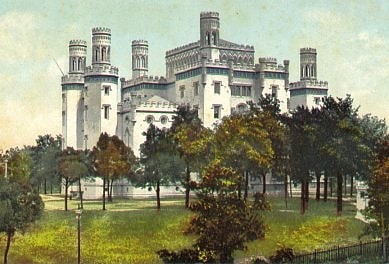
Museum in Baton Rouge, Louisiana. The Old Louisiana State Capitol, also known as the State House, is a historic government building, and now a museum, at 100 North Boulevard in Baton Rouge, Louisiana, U.S.A. It housed the Louisiana State Legislature from the mid-19th century until the current capitol tower building was constructed from 1929-32.
It was built to both look like and function like a castle and has led some locals to call it the Louisiana Castle, the Castle of Baton Rouge, the Castle on the River, or the Museum of Political History; although most people just call it the old capitol building. The term "Old State Capitol" in Louisiana is used to refer to the building and not to the two towns that were formerly the capital city: New Orleans and Donaldsonville.
The building was added to the National Register of Historic Places on January 12, 1973, and was designated a National Historic Landmark on May 30, 1974.[1]
Address: 100 North Blvd, 70801-1502 Baton Rouge
Louisiana State Capitol

Landmark building with a viewing deck. The Louisiana State Capitol is the seat of government for the U.S. state of Louisiana and is located in downtown Baton Rouge. The capitol houses the chambers for the Louisiana State Legislature, made up of the House of Representatives and the Senate, as well as the office of the Governor of Louisiana. At 450 feet tall and with 34 stories, it is the tallest skyscraper in Baton Rouge, the seventh tallest building in Louisiana, and tallest capitol in the United States. It is located on a 27-acre tract, which includes the capitol gardens. The Louisiana State Capitol is often thought of as "Huey Long's monument" due to the influence of the former Governor and U.S. Senator in getting the capitol built. The building's construction was completed in 1931. It was listed on the National Register of Historic Places in 1978 and was designated a National Historic Landmark in 1982.[2]
Address: State Capitol Drive, 70808 Baton Rouge
Tiger Stadium
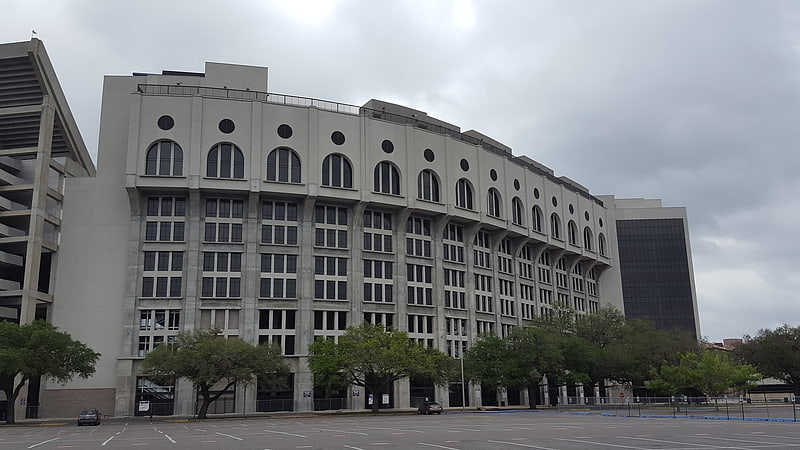
Tiger Stadium is an outdoor stadium located in Baton Rouge, Louisiana on the campus of Louisiana State University. It is the home stadium of the LSU Tigers football team. Prior to 1924, LSU played its home games at State Field, which was located on the old LSU campus in Downtown Baton Rouge.
Tiger Stadium opened with a capacity of 12,000 in 1924. Renovations and expansions have brought the stadium's current capacity to 102,321, making it the third largest stadium in the Southeastern Conference (SEC), sixth largest stadium in the NCAA and the eighth largest stadium in the world.[3]
Baton Rouge Zoo

A modest collection of wild animals. The Baton Rouge Zoo is located 15 minutes north of downtown Baton Rouge, Louisiana. The zoo is owned and operated by the Recreation and Park Commission of East Baton Rouge Parish, Louisiana, and is home to over 800 animals from around the world. The Baton Rouge Zoo has been accredited by the Association of Zoos and Aquariums since 1977—the first zoo in Louisiana to be accredited. The zoo lost its accreditation on March 26, 2018 due to infrastructure issues and animal escapes.
The zoo is open daily except on Thanksgiving, Christmas Eve, Christmas Day, and New Year's Day.
The zoo's mission is to connect people with animals & to play a role is saving wild animals in wild places.[4]
Address: 3601 Thomas Rd, 70807-1672 Baton Rouge (Northwest)
Belle of Baton Rouge
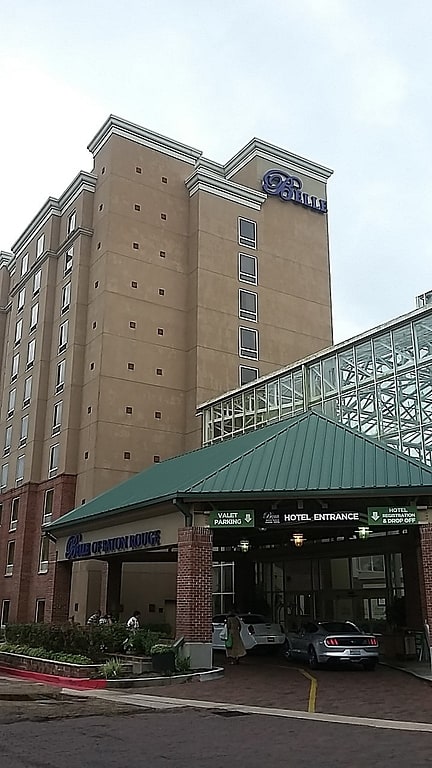
Hotel in Baton Rouge, Louisiana. The Belle of Baton Rouge is a riverboat casino and hotel in Baton Rouge, Louisiana. It is owned by Gaming and Leisure Properties and operated by Caesars Entertainment.[5]
Address: Baton Rouge, 103 France Street
St. Joseph Cathedral

Cathedral in Baton Rouge, Louisiana. St. Joseph Cathedral is a Catholic cathedral located in downtown Baton Rouge, Louisiana, United States. It is the mother church of the Diocese of Baton Rouge, and it was listed on the National Register of Historic Places on March 22, 1990.[6]
Address: Postal: 412 North Street, 70802 Baton Rouge
Pete Maravich Assembly Center
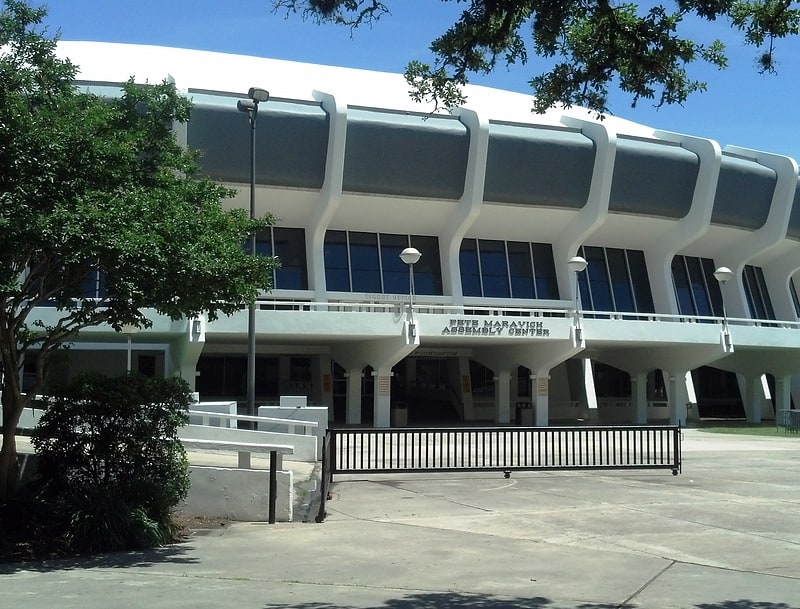
Arena in Baton Rouge, Louisiana. The Pete Maravich Assembly Center is a 13,215-seat multi-purpose arena in Baton Rouge, Louisiana. The arena opened in 1972. It is home to the Louisiana State University Tigers and Lady Tigers basketball teams, the LSU Tigers women's gymnastics team and the LSU Tigers women's volleyball team. It was originally known as the LSU Assembly Center, but was renamed in honor of Pete Maravich, a Tiger basketball legend, shortly after his death in 1988. Louisiana Governor Buddy Roemer signed an act to rename the building in Maravich's honor. Maravich never played in the arena as a collegian but played in it as a member of the Atlanta Hawks in a preseason game. But his exploits while at LSU led the University to build a larger home for the basketball team, which languished for decades in the shadow of the school's football program. The Maravich Center is known to locals as "The PMAC" or "Pete's Palace", or by its more nationally known nickname, "The Deaf Dome", coined by Dick Vitale. The Maravich Center's neighbor, Tiger Stadium is known as "Death Valley".
The slightly oval building is located directly to the north of Tiger Stadium, and its bright-white roof can be seen in many telecasts of that stadium. The arena concourse is divided into four quadrants: Pete Maravich Pass, The Walk of Champions, Heroes Hall and Midway of Memories. The quadrants highlight former LSU Tiger athletes, individual and team awards and memorabilia pertaining to the history of LSU basketball, gymnastics and volleyball. There are 11,230 permanent seats in the arena. 6,931 upper level seats, 4,299 lower level seats and 2,000 seats on retractable risers.
The "L" Club meeting room and Tiger Athletic Foundation offices are also located in the arena.
Prior to building the Assembly Center, LSU played its games at John M. Parker Agricultural Coliseum (aka, the "Cow Palace"), located on the southeast corner of the campus.[7]
Address: Baton Rouge, North Stadium Road
Capitol Park Museum
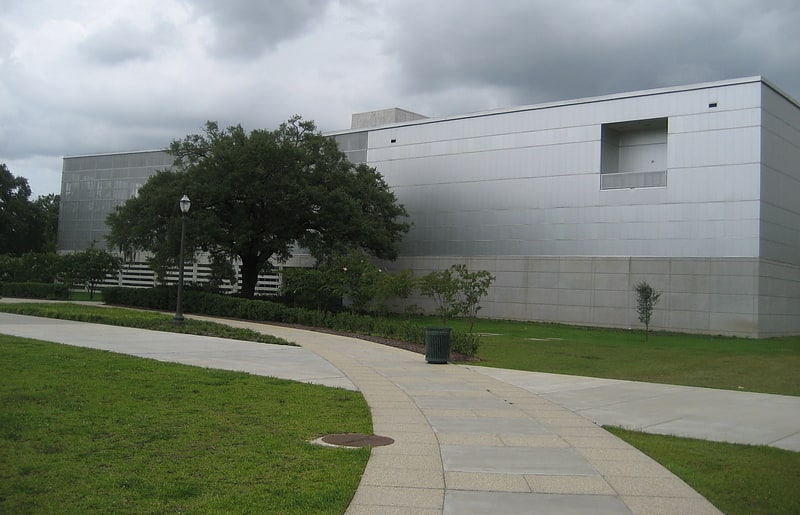
Museum in Baton Rouge, Louisiana. The Capitol Park Museum is a branch of the Louisiana State Museum located at 660 N. 4th Street, Baton Rouge, Louisiana.
There are two permanent exhibits on the history and culture of Louisiana. The building was designed by New Orleans-based design studio Eskew Dumez Ripple and exhibits were created by Christopher Chadbourne & Associates.
Notable objects include the Bayou St. John submarine and Louis Armstrong's childhood bugle.[8]
Address: 660 N 4th St, 70802-5342 Baton Rouge
USS Kidd

Museum in Baton Rouge, Louisiana. USS Kidd, a Fletcher-class destroyer, was the first ship of the United States Navy to be named after Rear Admiral Isaac C. Kidd, who died on the bridge of his flagship USS Arizona during the 1941 Japanese attack on Pearl Harbor. Admiral Kidd was the first US flag officer to die during World War II, and the first American admiral ever to be killed in action. A National Historic Landmark, she is now a museum ship, berthed on the Mississippi River in Baton Rouge, Louisiana, and is the only surviving US destroyer still in her World War II configuration.[9]
Address: 305 River Rd S, 70802-6220 Baton Rouge (South Baton Rouge)
Pentagon Barracks
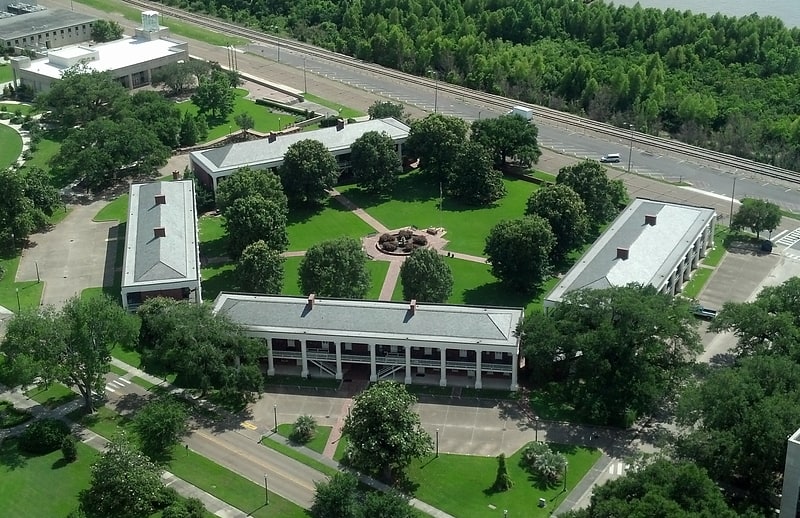
Building in Baton Rouge, Louisiana. The Pentagon Barracks, also known as the Old United States Barracks, is a complex of buildings located at the corner of State Capitol Drive and River Road in Baton Rouge, Louisiana, in the grounds of the state capitol. The site was used by the Spanish, French, British, Confederate States Army, and United States Army and was part of the short-lived Republic of West Florida. During its use as a military post the site has been visited by such notable figures as Zachary Taylor, Lafayette, Robert E. Lee, George Custer, Jefferson Davis, and Abraham Lincoln.[10]
Address: 859 N Third St, 70802 Baton Rouge
Louisiana Governor's Mansion

Building in Baton Rouge, Louisiana. The Louisiana Governor's Mansion is the official residence of the governor of Louisiana and their family. The Governor’s Mansion was built in 1963 when Jimmie Davis was Governor of Louisiana. The Mansion overlooks Capital Lake near the Louisiana State Capitol in Baton Rouge.
The Mansion was designed by the architectural firm of Annan and Gilmer of Shreveport, Louisiana. The final construction cost for the building was $893,843.00. The inspiration for the exterior design was Oak Alley Plantation in Vacherie, Louisiana. Like many plantation homes built between 1830 and 1860, Oak Alley was designed with a second story veranda.
The second-floor veranda found at Oak Alley was omitted. It was thought that the concept of a second story veranda was too informal for a Governor’s Mansion. Although the new Mansion is in the Greek Revival style, it also incorporates several Georgian features such as dormers, a fanlight of the doorway at the front entrance, and the long window on the circular stairs in the rotunda.
Inside, the floor plan includes twelve bedrooms and eighteen baths, two kitchens and one kitchenette, two dining rooms, one breakfast room, a receiving room for state affairs and another for routine business, a living room, a sitting room, two butleries and two security stations for the state troopers assigned to the mansion, and two offices-one for the governor and one for a secretary. Along with the dramatic spiral stairway in the rotunda, there is an elevator running from the basement to the third floor, as well as a system of dumbwaiters. These are wise amenities, considering the size of the house: altogether, the mansion comprises some twenty-five thousand square feet, serviced by a ninety ton cooling system to battle Louisiana's oppressive summer weather. The main foyer at the mansion features a mural that depicts various aspects of Louisiana History as well as symbolic references to many past Louisiana Governors. This mural was originally painted in the year 2000 under the administration of Governor Mike Foster. It was most recently updated with symbolic references relating to Hurricane Katrina and then Governor Kathleen Blanco.
White Doric columns line the building on three sides. The columns are interrupted on the east side by a driveway leading to an underground garage. The exterior of the building is constructed of hand-molded brick that has been painted white. The roof is made of cleft- face Vermont non-fading, gray-green slate. Front and side porches are of the same type of slate. Lamp posts located in the parking lot east of the building were once gas lights used in Plymouth, England. The cast iron railing atop the driveway retaining walls and at the second story windows was designed from the railing used on the old Beauregard House on Chartres Street in New Orleans and was modified with the diamond pattern by the architect.
The mansion sits on an 8-acre (32,000 m2) parcel of land. The grounds include a tennis court, a swimming pool, a vegetable garden, and a fountain area.
The Governor's Mansion is located at 1001 Capitol Access Road (LA-3045) in Baton Rouge, Louisiana 70802. The mansion is open to the public for tours by appointment only.[11]
Address: 1001 Capitol Access Rd, 70802 Baton Rouge
Greek Theatre
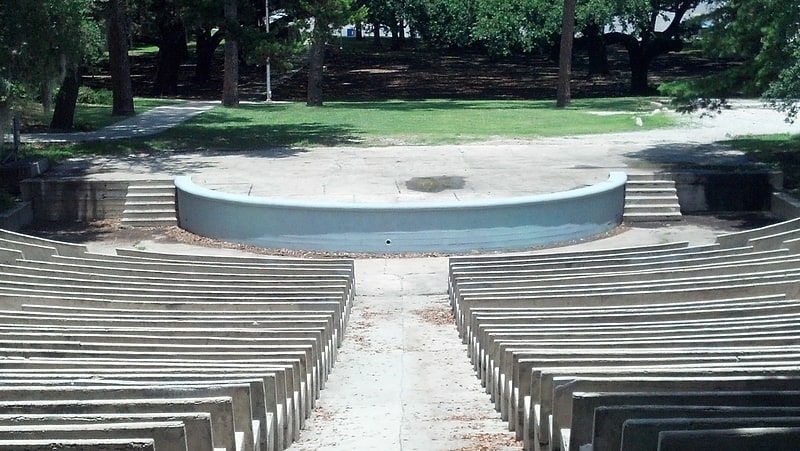
Theatre in Baton Rouge, Louisiana. The Greek Theatre in Baton Rouge, Louisiana is located on the campus of Louisiana State University. It opened in 1925 with seating for approximately 3,500. It was built to hold the entire university population and was once the location of major university assemblies.[12]
Raising Cane's River Center
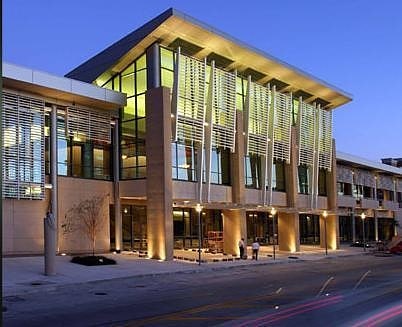
Theatre in Baton Rouge, Louisiana. Raising Cane's River Center is an entertainment complex in downtown Baton Rouge, Louisiana. Opened in 1977, the complex includes: an arena, ballroom, exhibition center, theatre and library. The venue hosts over 500 events per year. In 2016, Raising Cane's Chicken Fingers signed a 10-year naming rights agreement for the River Center.[13]
Address: 275 River Rd S, 70802-5809 Baton Rouge (South Baton Rouge)
Alex Box Stadium
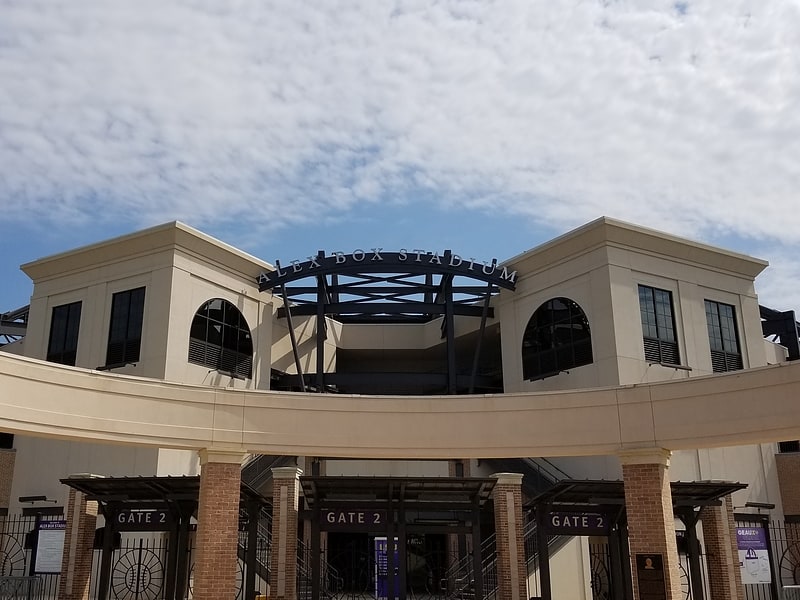
Stadium in Baton Rouge, Louisiana. Alex Box Stadium, Skip Bertman Field is a baseball stadium in Baton Rouge, Louisiana. It is the home stadium of the Louisiana State University Tigers baseball team. The stadium section were named for Simeon Alex Box, an LSU letterman, Purple Heart and Distinguished Service Cross recipient, who was killed in North Africa during World War II. On May 17, 2013, prior to a game against Ole Miss, the field was named and dedicated in honor of former LSU head baseball coach and athletic director Skip Bertman.
A design team of Grace & Hebert, DLR Group, and Jeffrey L. Bruce & Company designed Alex Box Stadium, Skip Bertman Field which opened during the 2009 season. Alex Box Stadium, Skip Bertman Field was slated to hold 8,500 fans but the addition of left field seating from Alex Box Stadium brought capacity up to 9,200. Additional seating in right field was added before the 2010 season, bringing the total (official) capacity to 10,150. Construction of additional suites for the 2012 season brought the capacity to 10,326.
The first game of the new stadium was played February 20, 2009. LSU beat Villanova by a final score of 12–3 in front of a crowd totaling 9,054. Alex Box Stadium, Skip Bertman Field was named the American Sports Builders Association Facility of the Year 2009.[14]
Address: Gourrier Ave, 70803-0001 Baton Rouge (South Baton Rouge)
Old Governor's Mansion
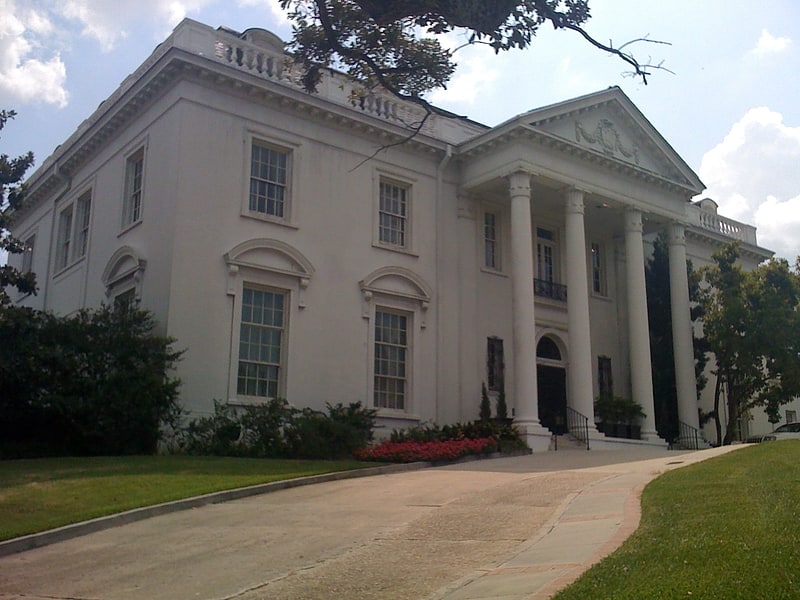
Building in Baton Rouge, Louisiana. The Old Louisiana Governor's Mansion, home of Preserve Louisiana, is located at 502 North Blvd. between Royal and St. Charles Streets in Baton Rouge and was used as Louisiana's official gubernatorial residence between 1930 and 1963; a new residence was completed in 1963. The Old Governor's Mansion was built under the governorship of Huey Long, its first resident. The building is reported to be inspired by the White House in Washington D.C. as it was originally designed by Thomas Jefferson. It is said that Long wanted to be familiar with the White House when he became president, so he had the White House duplicated in Baton Rouge. Some dispute this legend and simply say that the building is merely a fine example of a Georgian-style mansion.[15]
Address: 502 North Blvd, 70802-5719 Baton Rouge (South Baton Rouge)
Magnolia Mound Plantation
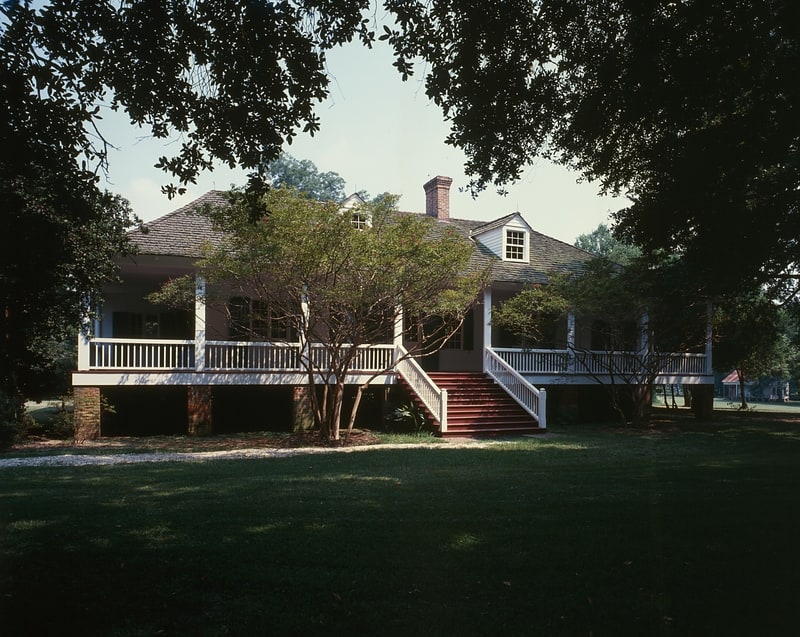
Historical landmark in Baton Rouge, Louisiana. The Magnolia Mound Plantation House is a French Creole house constructed in 1791 near the Mississippi River in Baton Rouge, Louisiana. Many period documents refer to the plantation as Mount Magnolia. The house and several original outbuildings on the grounds of Magnolia Mound Plantation are examples of the vernacular architectural influences of early settlers from France and the West Indies. The complex is owned by the city of Baton Rouge and maintained by its Recreation Commission. It is located approximately one mile south of downtown.
The house was listed on the National Register of Historic Places on September 7, 1972.[16]
Address: 2161 Nicholson Dr, 70802-8157 Baton Rouge (South Baton Rouge)
St. James Episcopal Church
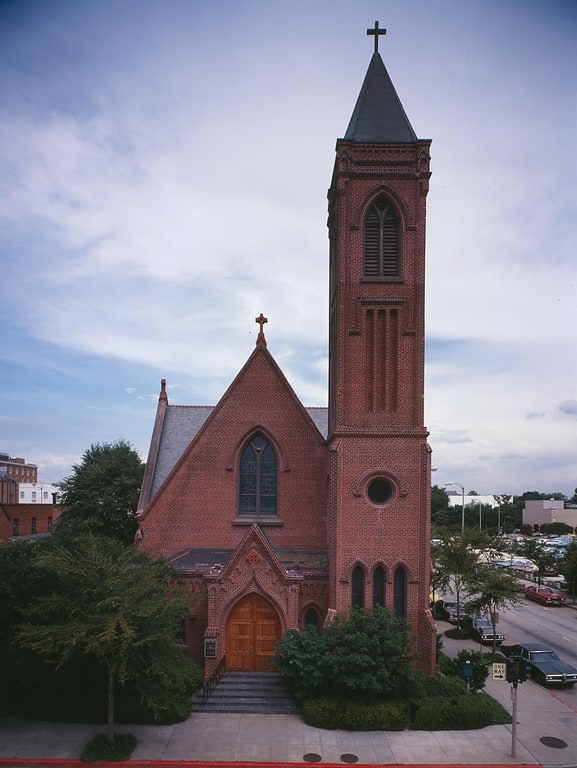
Church in Baton Rouge, Louisiana. The St. James Episcopal Church, located in downtown Baton Rouge, Louisiana, is a congregation of the Episcopal Diocese of Louisiana. Although Episcopalians began gathering in 1819, St. James Church formally organized as an Episcopal congregation in 1844 due to the influence and support of Margaret MacKall Taylor, wife of president Zachary Taylor. Within the spectrum of worship styles in the Anglican tradition, St. James Church was a Low Church parish during the 19th century, but has been considered a Broad Church parish since the early to mid 20th Century. In addition to worship, St. James Church is actively involved in service to the community, pastoral care, and Christian education for all ages. The church is also home to a two-time National Blue Ribbon day school.[17]
Address: 205 N 4th St, 70801 Baton Rouge
LSU Museum of Art
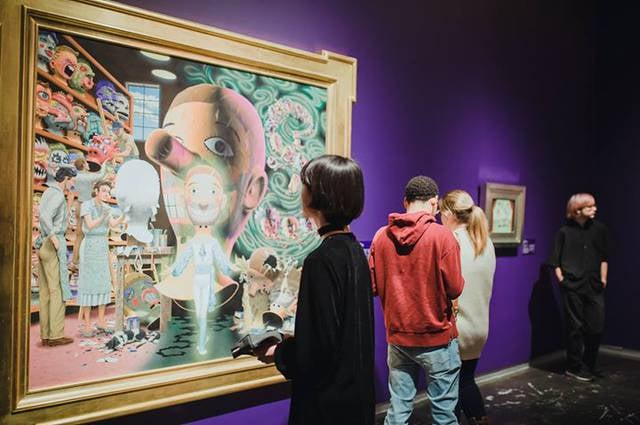
Museum, Art museum
Address: 100 Lafayette Street, Fifth Floor, 70801-1201 Baton Rouge
LSU Campus Mounds
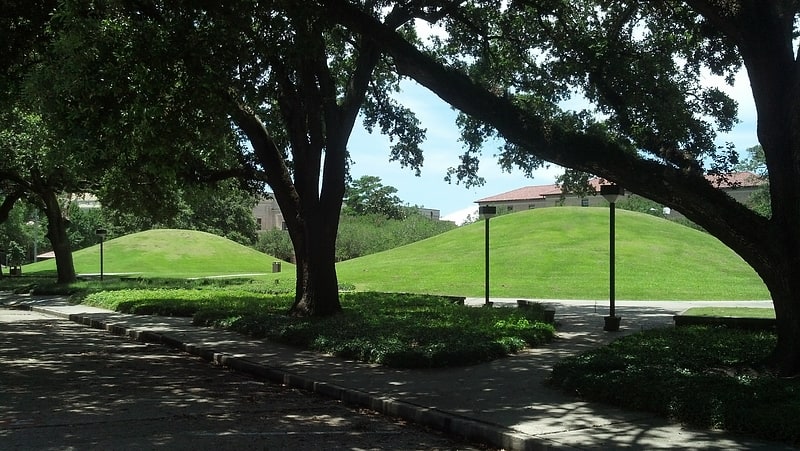
The LSU Campus Mounds or LSU Indian Mounds are two Native American mounds, likely of the Archaic Period, on the campus of Louisiana State University in Baton Rouge, Louisiana. The 20 feet tall mounds are commonly thought to be more than 5,000 years old, and one estimate places them at 11,300 years old. They predate the Great Pyramids of Egypt, and are believed to be the oldest surviving man-made structure in the Americas, or possibly the whole world.[18]
Swine Palace
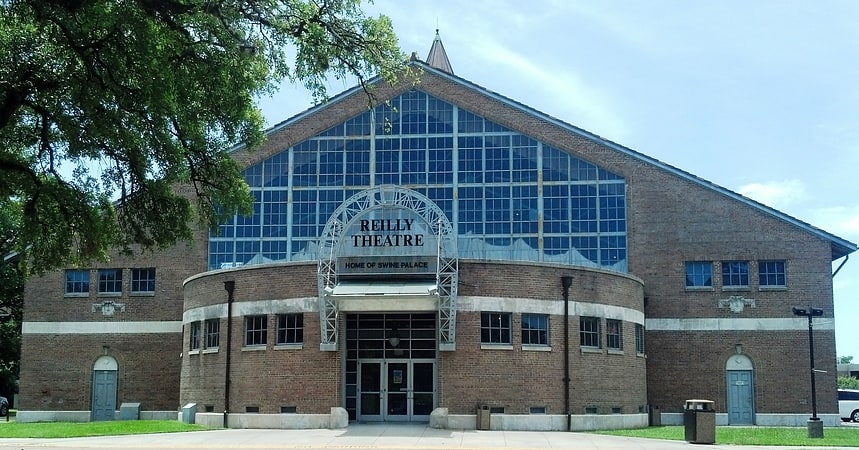
Theater company in Baton Rouge, Louisiana. Swine Palace is a non-profit professional theatre company associated with the Louisiana State University Department of Theatre in Baton Rouge, Louisiana. The theatre companies home is located in the Reilly Theatre on the campus of LSU.[19]
Address: 105 Mda Building Dalrymple Dr, 70803 Baton Rouge (South Baton Rouge)